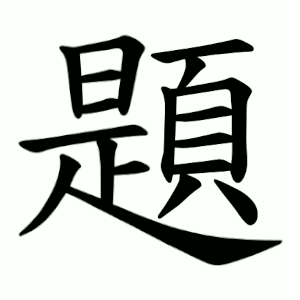題
- title, heading, subject;
Etymology
Usage in Korean
Refers to the foremost and most important part of a text or story.
Can also be used as a verb: “to give a title,” “to inscribe,” “to write.”
Historically also meant “forehead” (“the protruding part of the head”), but this sense is no longer in use.
Examples:
題目 (제목) – title, heading;
主題 (주제) – subject, theme;
詩題 (시제) – subject/title of a poem;
標題 (표제) – headline, caption;
題字 (제자) – an inscription, autograph, dedicatory writing.
Words that derived from 題
Additional notes
In literary and scholarly contexts, 題 carries not only the meaning of “title” but also the idea of highlighting the essence of a work.
The verb usage (“to title, to inscribe”) is still alive in Chinese and Japanese, often referring to calligraphic inscriptions or dedications on paintings.
題
제목
제
jemok
je
Kangxi radical:181, 頁 + 9
Strokes:18
Unicode:U+984C
Cangjie input:
- 日人一月金 (AOMBC)
Composition:
- ⿺ 是 頁
